
Story topic and angle
The 2019 Ethical fashion report was released a few weeks ago, and more than a third of companies have improved their rating grade since 2018. Among them, Zara, as the subsidiary brand of Inditex, was also graded from A- to A by the Baptist World Aid Australia’s report. It is worth to mention that Zara Australia has joined the high street brands like H&M in clothing recycling program since last December, which is available in all 19 Australian stores.
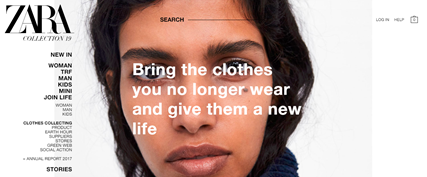
Also, the commencing of the annual Fashion Revolution Week during the week of 24 April makes me believe that it is the right time to write a news story about sustainable fashion. It is already the sixth year of Fashion Revolution Week memorialising the Rana Plaza collapse disaster in Bangladesh where over 1,130 sweatshop textile workers died.
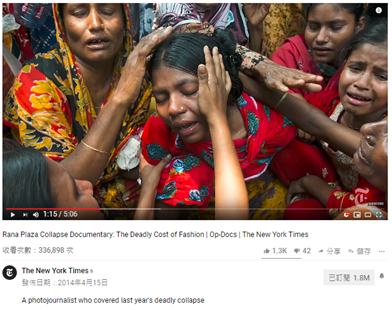
The panel event “Fighting Fast Fashion” will be launched by the slow fashion label Well Made Clothes in the last day of this week, and it would be a great opportunity for me to get the review from the other side. Because the event would focus on the major human rights and environmental concerns in the fashion industry which were regarded as the issues brought by fast fashion.
Thus, I would like to complete a piece of news feature about sustainable fashion in Assignment 3. The news values will be proximity, timeliness, and impact. The angle of this story will concentrate on what sustainable efforts else can the fast fashion create for transforming after improve their transparency of the supply chain and launching the recycling schemes.
Chosen publication and target user group
My intended publication would be the digital born website, Eco Warrior Princess. Launched in 2010, it is “one of the world’s leading platforms” based in Queensland and devoted to sustainable fashion and conscious business. According to the media kit, the 144,600+ monthly readers of Eco Warrior Princess are 95% female aged around 30 mainly from the USA and Australia. It obviously reaches a consensus of my piece which targets Australian women concerning about ethical fashion.
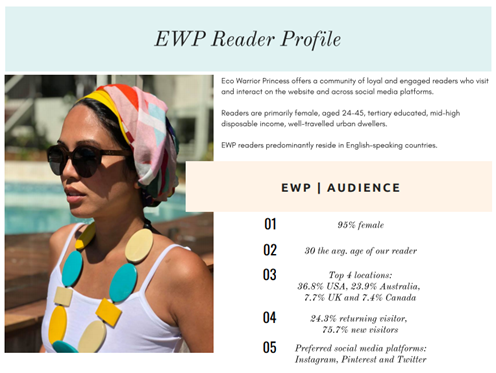
Sources of information
For achieving this feature in a more comprehensive way, both perspectives from the slow and fast fashion’s spokespersons who own bigger views and the authority are important. Meanwhile, I need to collect professional opinions from the academic field via my interview.
Therefore, in addition to Zara that I am trying to get in touch with, my intended interviewees of this story will also include Melinda Tually, the inspiring coordinator for fashion revolution AU/NZ, and Vicki Lin, a post-graduate student in The University of Manchester, whose main research field is sustainable fashion textile technology.
Moreover, the related sources both from the documentary and online are essential as well, such as the mentioned ethical report and the deadly collapse of the Rana Plaza video documentary.
Ideas for posting online…
To make this news feature be able to provide a good visual result as a piece of online journalism, I will follow the multimedia style of the Snow Fall project of the New York Times. Not just the effect embedded links, the first-hand images of recycling schemes slides, editing video of Tually’s interview, and even the hyper-local are the technologies I want to insert into my final assessment.
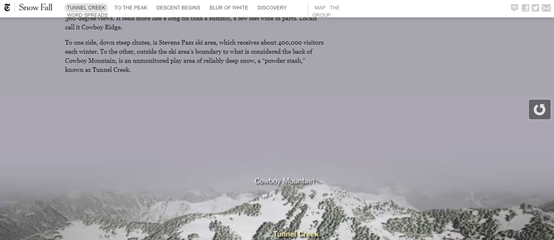




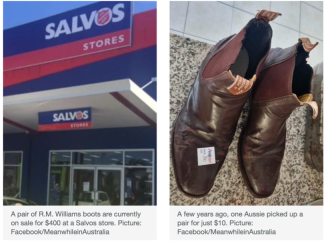
Hi Sally!
I think this is a great idea! It is a very relevant topic as the fight against fast fashion is ongoing, and sustainability is increasingly important. You are right, big brands like H&M do have sustainability reports which they put out to the public, however I wonder if these efforts are just a way for them to join the bandwagon of eco-fashion/eco-marketing. Perhaps this is one of the points you can touch on in your story.
I wonder if you can perhaps zone in on a more specific topic or subject, as trying to tackle the battle against fast fashion in general can be quite broad and would require a lot of work. Perhaps you can focus on a store in Australia who is focused on ethical clothing. I wonder what you think of something like the Social Outfit.
Or perhaps it would be good to focus on the event by Well Made Clothes. In that way, the story becomes tighter and more specific. I think making the story focused also makes it feasible to do, as I think that securing an interview from companies like Zara or H&M might be difficult.
I hope these comments are useful somehow and I look forward to reading your work!
Hi Kara,
Thanks for your comment. Yes, as part of ethical fashion, sustainable fashion/eco-fashion will be mainly focused on in my plan. And that is why I get into the topic from the fast fashion brands’ recycling program, and why I am going to interview the textile related people.
Moreover, I believe that the transformation of fast fashion, especially on eco-fashion/sustainable fabric field, is the angle I would concentrate on, so I do not think I can only focus the Well Made Clothes event itself. Firstly, based on all else the resources I have found so far, a load of evidence supports that fast fashion is transforming into a sustainable fashion on the right track, but there is room for improvement. And the “Fight Fast Fashion” event is just an opportunity to re-consider the gap. Like the inverted triangle structure in the news piece, I can put the perspectives from the Fashion Revolution at the bottom as the less important information. (I know we can do feature in a narrative way but not to follow an inverted triangle structure, here is just an example:)) The second reason is the timeliness of newsworthiness. It is the event happening on the last day of the Fashion Revolution Week, and it will lose the news value if be published one month later.
Therefore, my feature would not be a broad topic for the two sides’ battle. I still decide to collect two sides’ views for the comprehensive writing as I said, and I think the workload would be all good for a 1000 words story.